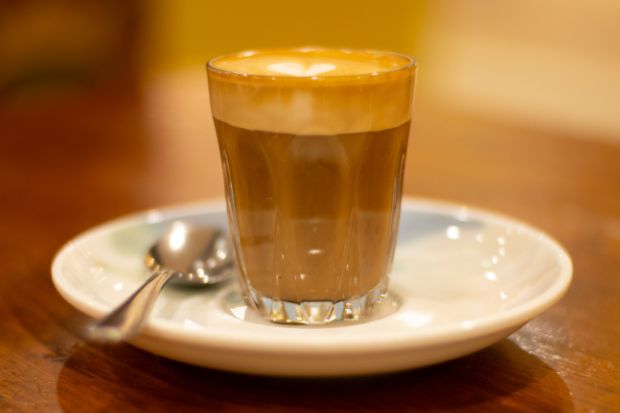Last Updated on December 10, 2023
You may have seen piccolo coffee pop up on the menu at your favorite artisanal coffee shop and wondered who the heck this new kid on the block is.
Much like the piccolo instrument is a tiny flute, the piccolo latte, or ‘small latte,’ is a tiny latte. It has some distinct differences from a traditional latte, which I’ll explain in a moment.
Another great Aussie invention, the piccolo latte began as a coffee roaster’s tool. This tiny latte allows a roaster to sample how different roasts express themselves when mixed with milk. Roasters need to sample drinks many times throughout the day, and the piccolo is a great way to avoid going too strong on the dairy.
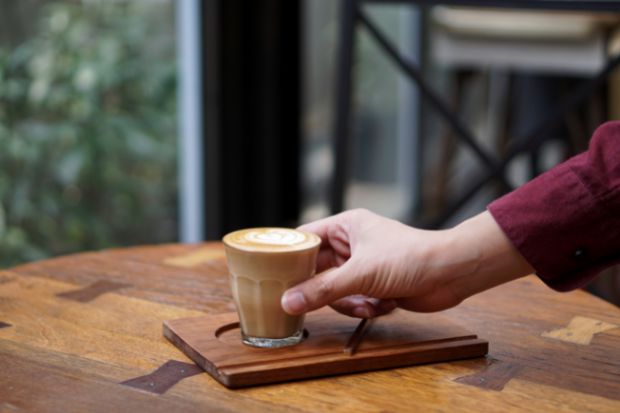
But what exactly is a piccolo latte and how does it differ from a regular latte or a cortado?
Elements of a Piccolo Latte
A piccolo latte is made with a single ristretto shot of espresso. This is the core of a piccolo and one of the factors that sets it apart from other small espresso drinks. The extraction of a ristretto shot is stopped short by around 20 milliliters or so. The result is a rich, dense, and rather sweet single espresso shot.
The single ristretto shot is then topped with well-integrated steamed milk (about three times the amount of espresso) and finished with a touch of foam, typically used for gorgeous latte art.
Piccolo steamed milk is stretched like latte milk, giving it that smooth, silky texture and allowing for the milk/espresso integration that is key to the piccolo.
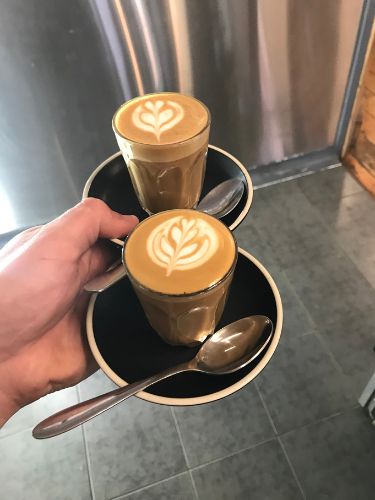
A piccolo latte is typically served in a four-ounce double-walled latte glass rather than in a mug or latte bowl. The steamed milk shouldn’t be overly hot, since this adorable little latte shot needs to be tossed back with expediency. Clear latte glasses also do a great job of showcasing the gorgeous milk integration and inspired latte art.
A Piccolo Is Not a Cortado
Due to its small size, the piccolo latte is often confused with a cortado. If you order a piccolo at a restaurant or shop that is unfamiliar with it, you might receive a cortado. A cortado is a delicious coffee drink in its own right, but the two drinks have some key differences that make for rather contrasting experiences.
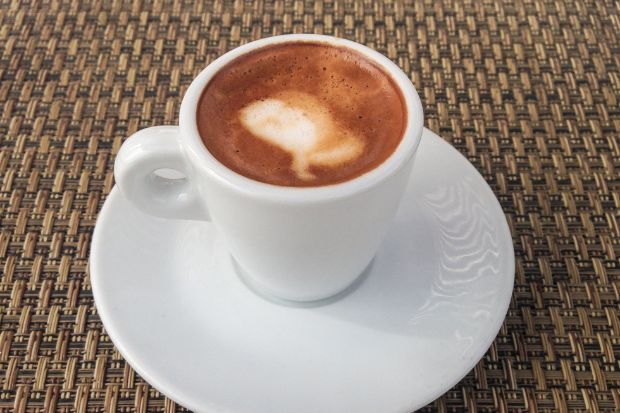
A cortado typically uses a double shot of fully extracted espresso and has a 1:1 espresso-to-milk ratio, often with a bit of foam on top. The level of milk integration will vary depending on who’s making it for you, but it will be a much stronger and bolder beverage than a piccolo.
How Is a Piccolo Latte Different From a Regular Latte?
If you order a latte at your favorite corner cafe, you’ll likely be asked which size and with how many shots of espresso. Some shops will have standard sizes and espresso ratios, but often lattes can be customized to suit your particular taste, and so they can vary greatly.
The general idea behind a latte is that it’s a more mellow beverage than the typically shorter and stronger cappuccino or flat white, having the highest ratio of milk to espresso.
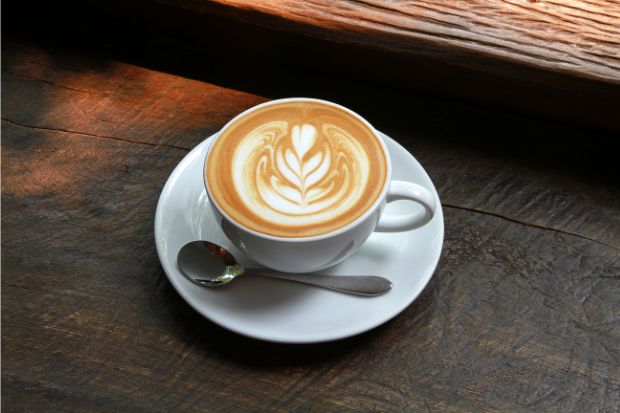
The same intent underlies the piccolo: more milk than espresso for a smoother, sweeter caffeine hit. A piccolo shouldn’t change much, though. It should always be a single ristretto shot with about 1:3 espresso to milk. There isn’t much room for customization within those tiny four ounces. If it’s a stronger taste you’re after, you should opt for a cortado or flat white.
Piccolo Coffee Comparison
There are so many different espresso coffee choices these days, all with subtle yet important differences. You might find yourself staring cross-eyed at the cafe menu, trying to remember what sets each option apart from the others.
To make your next cafe visit easier and help guide your home recipes with espresso machines, here’s a handy chart that breaks down the most popular milk-based coffee beverages in a simple and straightforward way:
| Beverage | Size | Espresso | Ratio of Espresso/Milk | Milk |
|---|---|---|---|---|
| Macchiato | 3 oz | double shot | much less milk | dollop of dry steamed milk/foam |
| Piccolo | 4 oz | single ristretto shot | 1:3 | integrated, stretched, silky steamed milk, touch of foam |
| Cortado | 4 oz | double shot | 1:1 | integrated, stretched, silky steamed milk, touch of foam |
| Flat White | 5-6 oz | double shot | 1:3 | integrated, stretched, silky steamed milk, very little foam |
| Cappuccino | 8-10 oz | double shot | 1:1:1 | equal parts dry steamed milk and foam |
| Latte | 10-20 oz | varies depending on size and preference | varies | integrated, stretched, silky steamed milk, touch of foam |
Final Thoughts
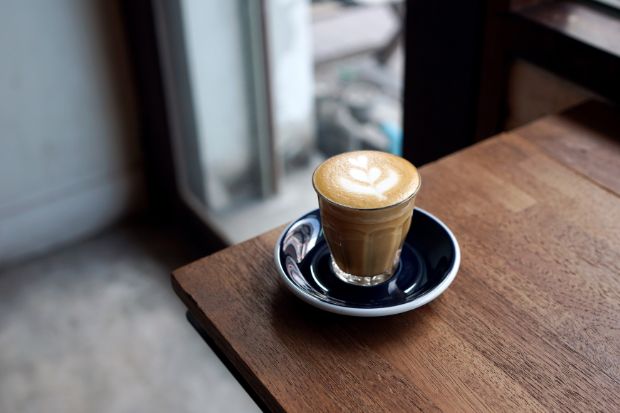
The piccolo latte is an adorable and delicious addition to the barista arsenal, perfect for that quick mid-afternoon pick me up. If made correctly the piccolo is a smooth, slightly sweet, well-balanced little hit of caffeine that works great for anyone who finds a straight shot of espresso a bit too bold or bitter.
The piccolo latte is still a rare gem these days. Like I mentioned before, if you order a piccolo you may find yourself with a cortado instead.
People tend to stick with what they know, and the latte and cappuccino still reign supreme in a lot of cultures, particularly in North America.
As coffee enthusiasts become more familiar with the piccolo, the drink will become more prevalent, just like the flat white, which used to be incredibly hard to find.
Next time you’re at your favorite cafe, ask the barista to give a piccolo latte a whirl. You might just start a new coffee drink trend in your neighborhood.

